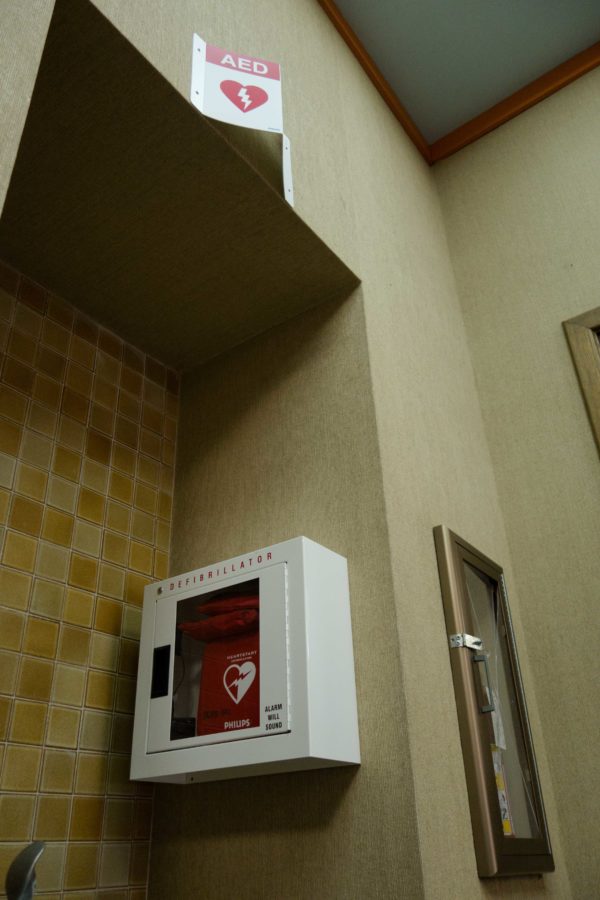Cardio pulmonary resuscitation can be a complicated and intimidating term, which is why Tami Bender, CPR instructor and HeartSafe Community advisory board chairperson, prefers to denote CPR as “citizen prepared to rescue.”
Santa Rosa Junior College health sciences instructor and trained emergency medical technician (EMT) Sharon McComb shares Bender’s beliefs that everyone should be prepared with CPR training, not just medical professionals.
“Everyone should know how to respond to an emergency. I think it should be a mandated course at this college,” McComb said.
Bender works with Healthquest, a service of the Petaluma Health Care District (PHCD), which provides CPR training and emphasizes heart health education.
“We want everyone to know at least the minimum [hands-only CPR],” Bender said. “We want people to make the decision to get involved and help.”
Hands-only CPR is an alternate form of CPR consisting only of chest compressions. It is recommended for an adult victim and is not recommended for children and infants, according to HeartSafe Community.
Save Lives Sonoma, a non-profit group aimed at improving survival rates of sudden cardiac arrest in Sonoma County, received a grant to purchase 200 automated external defibrillators (AED) in an effort to place one in every school in Sonoma County.
As part of the grant, the group initiated a program to provide hands-only CPR training in seventh-grade physical education classes across the county.
Just last fall 13-year-old Lewis Griffith of Forestville saved his father’s life with the hands-only CPR method he learned from the Save Lives Sonoma program when his father collapsed from a heart attack. Griffith spent six minutes giving chest compressions to his father while waiting for the paramedics to arrive and take over.
“The first person on the scene is the critical person in someone’s chances of survival, because if the brain goes without oxygen for four to six minutes, brain cells die,” McComb said.
According to the American Heart Association (AHA), “70 percent of Americans may feel helpless to act during a cardiac emergency.”
People often hesitate to give CPR to victims of heart attack or cardiac arrest because they may be afraid of catching a disease through mouth-to-mouth, or they might be afraid of administering CPR wrong and further hurting the victims.
To counter reluctance when stepping in to save somebody’s life, HeartSafe Community recommends hands-only CPR to those who are not trained or are unwilling to perform rescue breaths in the event of a sudden collapse of an adult victim.
McComb said as long as there’s no gross misconduct or negligence, and one provides reasonable care to the extent he or she is comfortable and qualified, then that person will be protected under the Good Samaritan laws.
Bender remarked how crucial it is to be prepared in emergencies. “It’s better to give CPR to someone who doesn’t need it than not give it to someone who does,” she said.
McComb noted the significance of administering the AED in a timely fashion in cardiac emergencies as it analyzes one’s heart rhythm and administers a shock to correct an arrhythmia, or irregular heartbeat.
According to Bender, when someone collapses from cardiac arrest, CPR should be started within 10 seconds and the AED should be administered within three minutes.
“What happens between the time 911 is called and the time 911 arrives on the scene can make the difference between life and death,” she said.
Bender mentioned how easy the AED is to use and how smart the device is when detecting irregular heartbeats. “It’s designed to not accidentally shock someone. It can only make the situation better and can’t make it worse,” she said.
The Petaluma Save-A-Life program has donated over 54 AEDs to non-profit organizations to be distributed in public areas across Petaluma, according to Bender.
Bender emphasized the importance of education on campus regarding CPR training and awareness of the locations of AEDs on campus.
There are currently 10 AEDs on the SRJC campus: five units in the district police department, two in Tauzer Gym, one in Race Hall, one in Burbank Auditorium and one in Haehl Pavilion. There are also three units on the Petaluma campus: two of them are in the district police department in Ellis Hall and the other is in Call Building.
SRJC offers a course in first aid, CPR and AED training for participants to gain emergency response skills in the event of a sudden injury or illness. The comprehensive course, HLE 6, provides certification in first aid and CPR, but does not satisfy CPR training for medical professionals, according to McComb.
Healthquest is an AHA authorized training center that offers CPR and first-aid classes in Santa Rosa and Petaluma locations for laypersons and healthcare providers, with discounts currently available to students.
The PHCD HeartSafe Community Program official statement says one of their goals is to ensure the community is prepared for sudden cardiac emergencies and ready to save lives.





Rick • Apr 20, 2015 at 12:24 pm
District Environmental Health and Safety also offers free CPR/AED and First Aid training monthly for staff and faculty. Any staff and faculty can sign up to take the class and become certified.